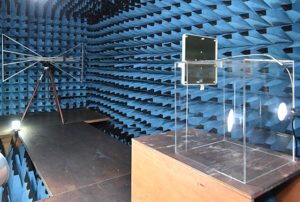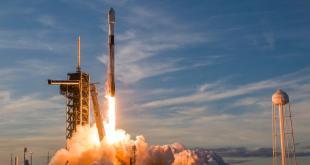
Addvalue Innovation Pte. Ltd., a wholly-owned subsidiary of SGX Mainboard-listed Addvalue Technologies Ltd., announced on 22 October 2019 the delivery of the first flight model of the company’s groundbreaking Inter-satellite Data Relay System (IDRS) terminal to Capella Space. Addvalue’s IDRS™ system, developed in tandem with Inmarsat, features Addvalue’s proprietary technology, which provides the world’s first commercial on demand, real-time connection for LEO satellites. This is a significant milestone on the road to next-generation LEO satellite constellation operations.
The partnership between Addvalue, Capella and Inmarsat is powered by Inmarsat’s award-winning global L-band network. The three companies are working towards outfitting Capella’s constellation of 36 small LEO SAR satellites with Addvalue’s IDRS terminals, thereby enabling two-way, secure and always-on IP-based connectivity. “Inmarsat has a 40 year heritage in providing real-time global communications to customers using land, air and maritime assets,” noted Nick Shave, VP of Strategic Programmes at Inmarsat, “and we are excited to see Capella Space become the first smallsat customer to augment and enhance their operational capability by leveraging Inmarsat’s L-band service in a new market.” Within the commercial LEO satellite market, traditional communications technology allows operators to communicate with their satellites during approximately 4% of the orbit, whereas the addition of the Addvalue IDRS terminal will enable communications for virtually 99% of the orbit. This is not an incremental difference, as commercial operators will now have the option to leverage nearly constant communication with their LEO satellites.
When Capella completes the launch of their first commercial LEO satellite fitted with this terminal in early 2020, it will not only be a communication advancement, it will also be a revolutionary step for the commercial imagery market. The IDRS terminal will drastically reduce the time required for Capella’s customers to order and receive delivery of high-resolution imagery from anywhere in the world. Payam Banazadeh, CEO and Founder of Capella commented, “With Addvalue terminals, Capella will be the first satellite imagery provider with real-time tasking. Capella’s mission is centered upon transformative delivery of earth imagery, fueling real-time global insights. The satellite communication expertise that Addvalue and Inmarsat offer perfectly complement this mission; and we are excited about today’s milestone and our upcoming launch.” Payam continued, “Subsequent to the successful delivery of this first flight model, Capella has given the go ahead to Addvalue for the fabrication and supply of the next 6 flight units to be delivered in early 2020.”
For Addvalue, today’s announcement marks the culmination of more than 5 years of development, technology demonstration, and product qualification. Dr. Colin Chan Kum Lok, Addvalue’s Chairman and CEO, remarked, “The successful delivery of the first flight IDRS terminal to Capella Space is a major accomplishment in Addvalue’s history. Over the last twenty-five years, Addvalue has been at the forefront of communication technologies. It is with great pride that we announce this very significant milestone, which marks the commencement of our IDRS system commercialization.” The company offers both IDRS hardware as well as airtime service to its customers, as an airtime distribution partner for Inmarsat’s L-band network within the LEO satellite market. “What we are offering is truly unique, and we look forward to exploring the many ways in which this technology can transform the market.”





